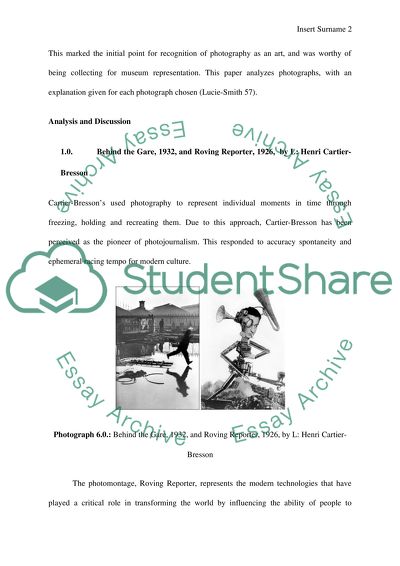Cite this document
(“Photography essay Example | Topics and Well Written Essays - 2500 words”, n.d.)
Photography essay Example | Topics and Well Written Essays - 2500 words. Retrieved from https://studentshare.org/visual-arts-film-studies/1644624-photography-essay
Photography essay Example | Topics and Well Written Essays - 2500 words. Retrieved from https://studentshare.org/visual-arts-film-studies/1644624-photography-essay
(Photography Essay Example | Topics and Well Written Essays - 2500 Words)
Photography Essay Example | Topics and Well Written Essays - 2500 Words. https://studentshare.org/visual-arts-film-studies/1644624-photography-essay.
Photography Essay Example | Topics and Well Written Essays - 2500 Words. https://studentshare.org/visual-arts-film-studies/1644624-photography-essay.
“Photography Essay Example | Topics and Well Written Essays - 2500 Words”, n.d. https://studentshare.org/visual-arts-film-studies/1644624-photography-essay.


